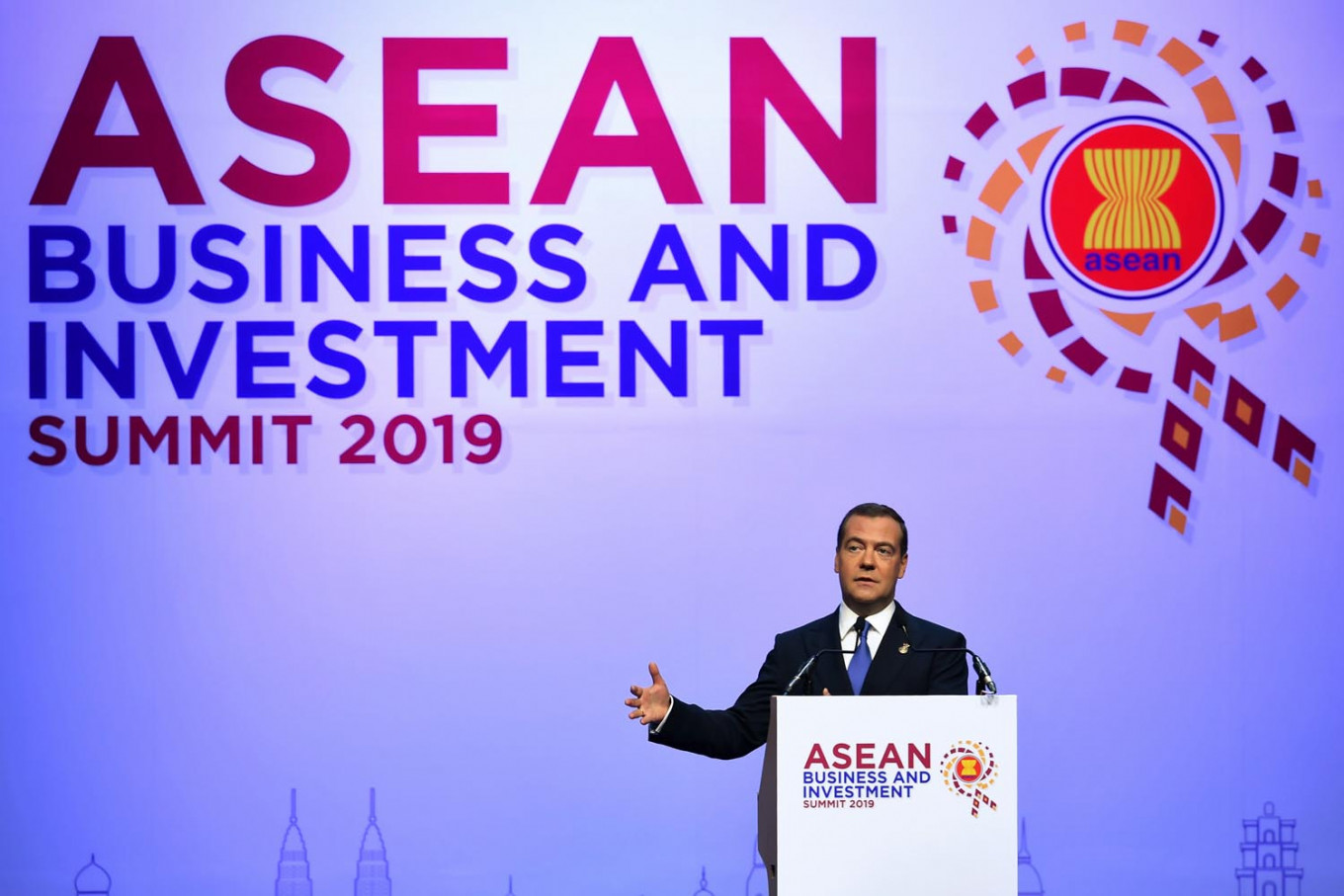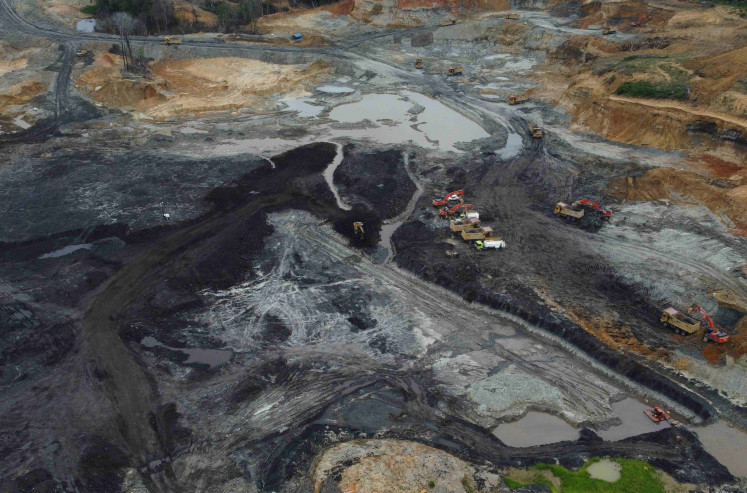Popular Reads
Top Results
Can't find what you're looking for?
View all search resultsPopular Reads
Top Results
Can't find what you're looking for?
View all search resultsStrategic stability vis-à-vis ASEAN: A strange formula?
The Cold War is over. But strategic stability has remained the cornerstone of global peace and security. It has been taken for granted for a long time, allowing everyone to focus on peaceful development and believe that this is indefinite. Over the last two decades, however, we have witnessed the consistent destruction of key pillars of global strategic stability.
Change text size
Gift Premium Articles
to Anyone
L
ooking at the title of this article, some readers will perhaps think that this is indeed a strange formula; strategic stability is an issue between Russia and the United States, we are far from that and preoccupied with other problems, first of all COVID-19 and its consequences. Sometimes even senior ASEAN experts nod politely, when I raise this theme, but then think to themselves: This is not our problem.
I will try to prove that this point of view is not just naivety, but a seriously maleficent delusion. If you wish, I will even dare to note that the real perspective is that COVID-19 and the destruction of a strategic stability system could reinforce each other to create dangerous repercussions for the Asia-Pacific, including (if not first) ASEAN.
Strange, is it? Let us analyze the facts.
The military concept of strategic stability that developed during the Cold War refers to a situation in which the number of nuclear weapons on two opposing sides is such that it guarantees mutual assured destruction. Any disruption to this balance will spark an arms race.
The Cold War is over. But strategic stability has remained the cornerstone of global peace and security. It has been taken for granted for a long time, allowing everyone to focus on peaceful development and believe that this is indefinite. Over the last two decades, however, we have witnessed the consistent destruction of key pillars of global strategic stability.
In 2001, the US withdrew from the Anti-Ballistic Missile (ABM) Treaty, clearing any restrictions in its way to create its strategic defense system, thus undermining the ability of others to retaliate in the case of US aggression. Possessing such a missile defense "umbrella" can lead to an illusion of invulnerability and impunity, and finally give rise to a temptation to take unilateral action in solving global and regional problems.
The next highly destructive move by Washington was its withdrawal from the Intermediate-Range Nuclear Forces (INF) Treaty in August 2019. Signed in 1987, this agreement prohibits the US and the USSR from possessing ground-based ballistic missiles with ranges of 500 to 5,500 kilometers.
American officials admitted that the decision to withdraw from the INF Treaty was motivated by the desire to gain freedom of action to implement military programs in the Asia-Pacific. Today, the development and testing of a wide range of weapons that were previously prohibited under the INF Treaty are in full swing in the US.
The extension of the New Strategic Arms Reduction Treaty, which expires in February 2021, is now in question. This agreement between the US and Russia to limit the number of deployed nuclear armaments is the cornerstone of the nuclear arms control architecture. Russia proposed that it be prolonged without preconditions. If the treaty is not renewed, this decades-long system will collapse.
How does all of this affect the Asia-Pacific? US officials have repeatedly announced their intention to deploy medium-range missiles and defense systems in the region, possibly in Guam, Palau and even Japan. This aim is being reinforced by building closed-door “Indo-Pacific” alliances, expanding military exercises and creating new military bases in the region.
You can easily guess against whom those weapons and mechanisms are aimed: primarily China, as well as Russia.
Such steps will undoubtedly provoke a chain reaction. First, the “compensatory” measures against those states where American missiles are deployed, and then followed by the retaliatory actions of these countries. The situation will develop according to a classic scenario and lead to an arms race that will spread through the entire region.
If one believes that this storm will bypass ASEAN, let’s answer this question: What exactly shields ASEAN from it? The region does not have a legally binding document that frames the regional security architecture. (The idea for such a document was proposed by former Indonesian foreign minister Marty Natalegawa in 2013 and was welcomed by Russia.) The Southeast Asia Nuclear-Weapon-Free Zone (SEANWFZ) Treaty is yet to be effectively established.
And when was the last time one heard anything about the activities of the ASEAN Defense Ministers Meeting (ADMM)-Plus?
The first line of defense against international turbulence should be international law, because when everyone abides by the same universal principles and norms enshrined in the UN Charter and treaties like the Treaty of Amity and Cooperation in Southeast Asia, then we have a security shield.
But today, we are seeing attempts to substitute international law with the so-called rules-based order. This “order” is designed by the strong to legalize their pursuit of strategic advantage with “rules” that can be changed or forgotten overnight and further undermines strategic stability and trust.
In the meantime, ASEAN is already finding itself in the middle of rivalry in the region among major players. This is indirectly confirmed by the ASEAN foreign ministers statement in August 2020 “on the Importance Of Maintaining Peace And Stability in Southeast Asia”, in which ASEAN countries declared their desire to remain neutral in the face of the changing geopolitical dynamics. The situation will only worsen in the case of an arms race, which is, as we can see, not that far off. ASEAN could lose its unity and centrality in the regional architecture, divided among its alliances.
The growing rivalry will lead to a significant decline in overall security of the ASEAN member states. An arms race requires huge resources. Military spending will suck money out of those funds intended for health, economic and social programs, first of all from the COVID-19 response and its complex consequences. There is thus a direct link between the destruction of strategic stability and the ability of all countries to tackle COVID-19.
We are deeply convinced that ensuring one’s security at the expense of others’ security is unacceptable. It is extremely dangerous to provoke an escalation of interstate tensions and an arms race.










